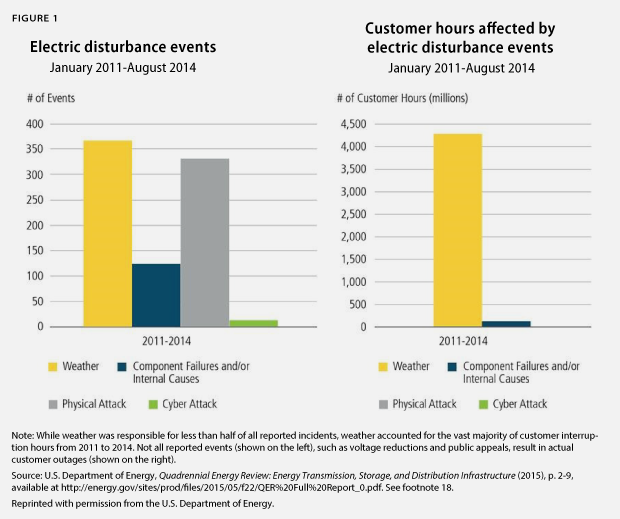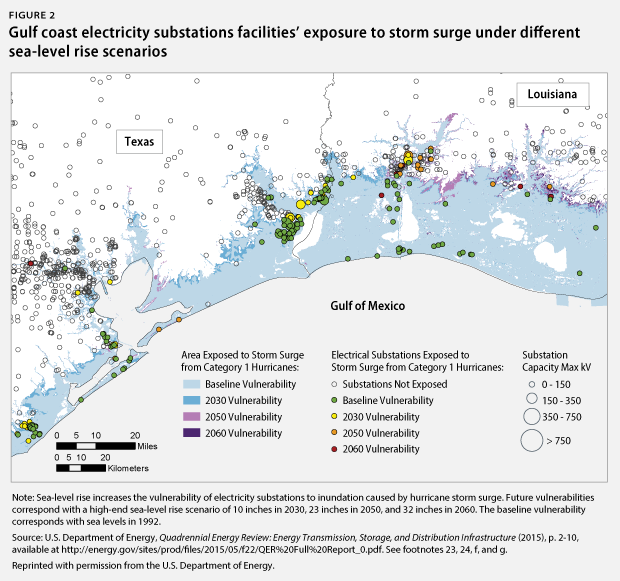The Environmental Protection Agency’s, or EPA’s, Clean Power Plan—proposed in June 2014 and expected to be finalized this summer—will require significant changes to the United States’ electricity generation mix in order to cut carbon pollution.
The Clean Power Plan sets limits on the amount of carbon emissions from existing power plants in each state. Limits vary based on considerations such as each state’s estimated ability to switch from coal to natural gas for electricity generation; increase efficiency in the remaining coal-fired plants; generate more electricity from renewable sources; and reduce demand through energy efficiency. Some critics have raised concerns over whether changes to the electricity generation mix—which are necessary in order to meet the plan’s emissions targets—will affect the reliability of the U.S. electricity grid.
Grid reliability is paramount, which is why the EPA is working with partners to ensure that the final rule will not threaten grid reliability but instead provide cleaner—and still reliable—power to all Americans. In fact, rather than posing a threat, the Clean Power Plan targets the most significant danger to grid reliability: the damaging effects of unmitigated climate change.
The Clean Power Plan: Flexibility protects the grid
Multiple studies have found that the Clean Power Plan is unlikely to hurt grid reliability. TheAnalysis Group released a report in February 2015 that studied the changes the energy industry will undertake in order to comply with the EPA’s proposed rule, and the Brattle Group analyzed grid reliability concerns in a report prepared for the Advanced Energy Economy Institute. The authors of both reports pointed to the constant transformation of the power sector, the variety of operational and technical tools available to operators, and the Clean Power Plan’s compliance flexibility as factors that would keep the grid reliable.
Both studies concluded that utilities and grid operators would have to address grid reliability issues regardless of the Clean Power Plan due to shifts in the energy industry, including changing fossil-fuel prices, power plant retirements, an increase in energy-efficiency resources, and pollution regulations. Moreover, electric utilities already have established practices in place to address reliability concerns that might arise, such as planning processes; communications and operations systems; back-up plans and redundancies; and the division of responsibilities among grid operators, regulators, and plant and transmission owners.
Despite these findings, the EPA is taking reliability concerns seriously, working closely with the U.S. Department of Energy and the Federal Energy Regulatory Commission, or FERC, to make certain that the final rule achieves the carbon-emissions reductions target while still maintaining grid reliability. The FERC recently held a series of technical conferences that focused on issues of compliance, including grid reliability, where stakeholders had the opportunity to voice concerns and discuss compliance options.
Climate change: The real threat to reliability
The debate regarding how the final EPA rule might affect grid reliability obscures the threat that climate change already poses to the electricity grid system, as well as the ways in which the impacts of climate change have affected power customers across the United States. Without action to cut carbon pollution and mitigate climate change, extreme weather events—including storms, heat waves, and droughts—are projected to increase in both frequency and strength. The power sector is not immune to the costly impacts of these events.
According to the U.S. Department of Energy’s Quadrennial Energy Review, or QER, “Extreme weather and climate change is a leading environmental risk” to electricity transmission, storage, and distribution systems. Hurricanes and tropical storms can significantly damage electricity infrastructure, as demonstrated in 2012 by the mass power shutdowns across the New York area after Hurricane Sandy, which left more than 8.5 million customers without power.
The QER explains that historically, the leading causes of grid outages have been weather related. Figure 1shows that, between 2011 and 2014, weather-related disturbances to the grid were responsible for more customer outage hours than physical attacks, internal component failures, and cyberattacks combined.

Severe storms are not the only climate-related threat to the grid: Heat waves increase customer demand for air conditioning, which stresses the grid and reduces the efficiency of the electricity transmission and distribution process. Likewise, droughts limit the supply of the water required to process natural gas; affect water-based transport routes for energy products; and decrease the opportunity for dry states, such as California, to generate hydropower.
Sea-level rise poses a unique risk to coastal regions, which will be particularly vulnerable as the climate continues to warm. In addition to endangering homes and businesses, sea-level rise threatens electricity infrastructure where electric substations are at heightened risk of inundation from storm surges. Figure 2shows that hundreds of electricity substations are already at risk, with more likely to become vulnerable as the climate continues to warm.

Conclusion
Electricity grid infrastructure is already vulnerable to increasingly common extreme weather events such as severe storms, droughts, and heat waves. The United States must take aggressive action to reduce carbon emissions and slow the effects of climate change. The EPA’s Clean Power Plan will be a critical, timely step toward achieving the necessary reductions to address climate change while ensuring long-term grid reliability across the United States.
Myriam Alexander-Kearns is the Research Associate for the Energy Policy team at the Center for American Progress.